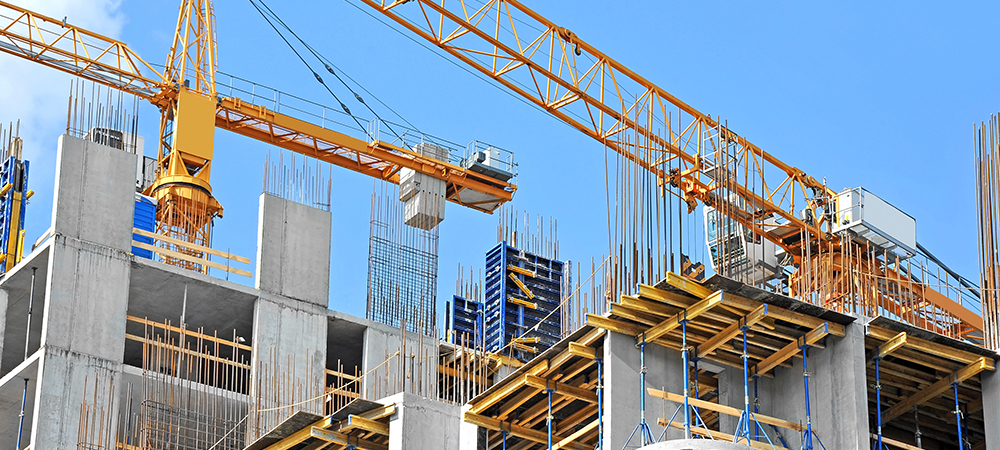Hypervine is a Scottish start-up helping to reduce emissions and increase efficiencies in construction. Paul Duddy, CEO and Founder of Hypervine, talks to Intelligent SME.tech about how the company has used technology to scale and how it’s making its mark in the construction sector.

Can you tell us about your role at Hypervine and what this looks like day-to-day?
As a start-up CEO, I wear many different hats, I am hands-on across the business including product and commercial development, business admin and accounting. Whatever moves the business forward the fastest is usually my area of focus at any given time.
Typically, I wake up at 5:30 am, read and answer emails. From 9 am onwards my day is generally split into business operations, product development and commercial development.
Product development usually involves meeting with the dev team and getting involved in the design – it’s very important that we design products that are easy and intuitive to use for our customers. There is a lot of idea generation at Hypervine, it’s a very exciting place to work as our industry has lots of challenges that need to be solved. One of the most important roles I do is decide where we should focus and what will deliver the most impact in the shortest amount of time – easier said than done.
As with product development, commercial development is always going through stages of refinement and improvement so that we can better understand and serve our customers. The commercial activities are exciting as it involves speaking with our customers, pitching to new customers and learning more about the industry and how we can help them.
Another aspect of what I do is trying to anticipate and manage a crisis, during a crisis the company may not grow and could possibly contract but having plans in place to tackle this is critical to the sustainability of the company over a long period.
Can you tell us about Hypervine’s core values, aims and how it aligns with your strategy?
At Hypervine we believe that a marginal gains theory led approach will drive the construction industry into a high-performance era with less waste, lower emissions and drive the path towards zero, pushing that target into the capabilities of the industry.
Hypervine’s mission is to create data standardisation, benchmark operations and enable net-zero construction.
The construction industry is a big old industry that has been largely left behind as many companies digitised. Regulations and contracts also impact how a construction site operates, so when we design new features, we take all of this into consideration to ensure that our customers can easily use our system that fits within their current workflows.
Can you tell us more about Hypervine’s conception and how it has grown, since?
Hypervine started in 2018, that idea was to create a system that could help create traceability in the construction industry that could be used to improve operations by easily accessing all of your records from one central point. The catalyst for this was when Oxgangs Primary School wall collapsed, the tragedy and the investigation showed that it was impossible to establish exactly what happened, it proved impossible at the time to identify where or when an error had been made.
We used Blockchain technology to create a secure traceable record of events at construction sites, but we learned that there was a lot of missing data that would be useful to improve the industry further. Therefore, we started to develop new features that would passively capture data and further enhance the data capture process, giving construction much more detailed site insights.
How does Hypervine’s technology help augment the construction process and improve operations?
Hypervine.io technology helps augment the construction process and improve operations through the automation of manual processes made possible by passively capturing data on-site. We then use AI to generate insights from the vast amount of data that is coming in and identify problem areas that can help companies large or small to reduce costs in tools and materials, reduce carbon emissions and calculate their carbon offsets. This is achieved almost instantly through the Hypervine dashboard.
Can you tell us more about the partnership between Hypervine, Morrison Construction and Scottish Water?
Morrison Construction was our first customer, they were impressed with our early product development and they wanted to continue using Hypervine as time went on. The leadership there went on to ask if we would like to help support a bid to Scottish Water called DV2, of course, we jumped at the opportunity. We worked with Morrison Construction on the pitch, explained our capabilities and helped them with the due diligence work for the Scottish Water bid DV2, Morrison Construction ended up winning the bid – which was very exciting news – something which we take great pride in having been a part of at Hypervine.
How has your AI and Blockchain technology help Morrison Construction and Scottish Water reduce their carbon emissions?
Using AI and Blockchain has helped Morrison Construction identify the source of emissions allowing them to take active steps to reduce the emissions on the high emitters – this is something that wasn’t visible before. As you start reducing emissions on sites you also start reducing the assets or frameworks’ overall emissions which helps Scottish Water to reduce emissions on its capital improvements.
How has the implementation of your technology allowed organisations – and Hypervine – to scale and manage their data?
Yes, with the automation of data capture and using Blockchain technology to ensure the integrity of data being stored it means vast amounts of data is being captured, stored and organised that is easily accessible from a single point. This massively improved coordination of site data and operations within construction firms.
What does the digital future for construction look like?
The digital future for construction looks very promising. Construction companies are increasingly open to using new technology and understand the need to digitise to improve operations, lower their emissions and improve profit margins – it’s a win-win for construction.
Technology helps construction reduce laborious operations and understand their organisations better, which is leading to better quality outputs of projects and higher customer satisfaction.
Construction is at a wonderful crossroads, the companies that adopt digital technologies will win more bids as they will be able to measure their carbon emissions and they will be able to improve their profits as automation of digital technologies reduces their operational costs, including mistakes. Digitising construction is certainly at an early stage of a very exciting period of growth and development.


